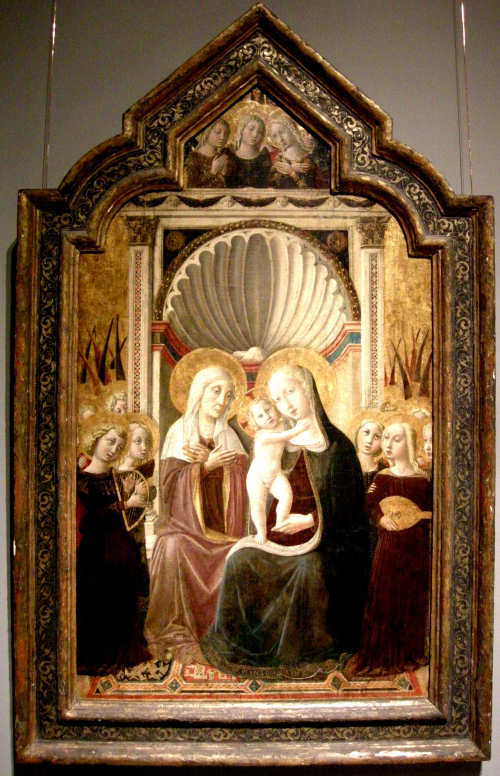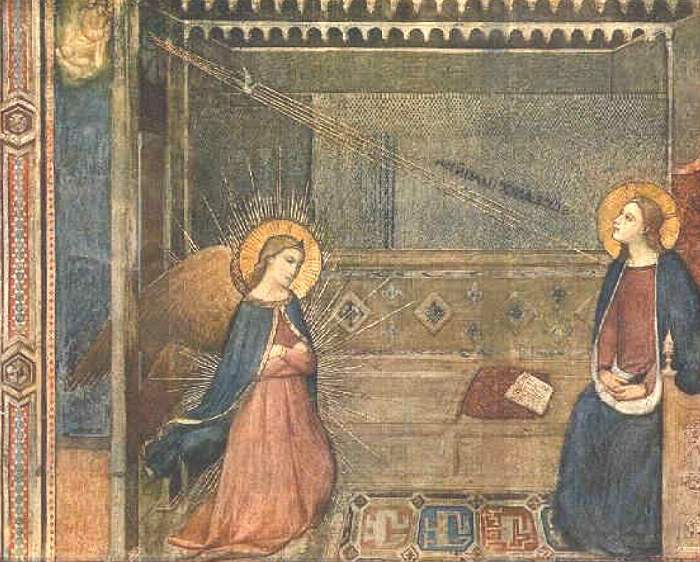George has discovered in a 1475 painting by Niccolò Alunno

Niccolò Alunno, Madonna and Child with St Ann, 1475, Metropolitan Museum of Art, New York
another example of rug with the same kind of very strange animals, which was already featured in two older rugs: The one in FIG 13 (Salon on Animal Rugs), dated 1425, and the one in FIG 9, dated 1252.

Niccolò Alunno, Madonna and Child with St Ann, 1475, Metropolitan Museum of Art, New York (detail)

FIG 9. Anonymous, Annunciation, 1252, Church of the Santissima Annunziata, Florence.

FIG 13. Gentile da Fabriano, Detail from Annunciation, 1425, Vatican.
It is amazing that such a strange rug could have been represented three times over a period of 250 years. Even more so, when one takes into account that while the three rugs are very similar, (obviously the brainchildren of the same weaving people) they are not identical. The two later rugs are not mere copies of the first one.
This somehow weakens the hypothesis that, being part of a fresco on the walls of a Florence church, the 1225 rug could have been seen by both the later painters, who could have copied it.
Then what?
Did both Da Fabriano and Alunno take inspiration from the older rug, but modifying it?
Were the thirteenth century weaver "tribes" still active during the fifteenth century?
Please also note the battle of phenix and dragon in blue-black rectangles, which can be seen in both FIG 9 and 13 and is also partly visible under the Virgin’s robe.
Best regards
Pierre